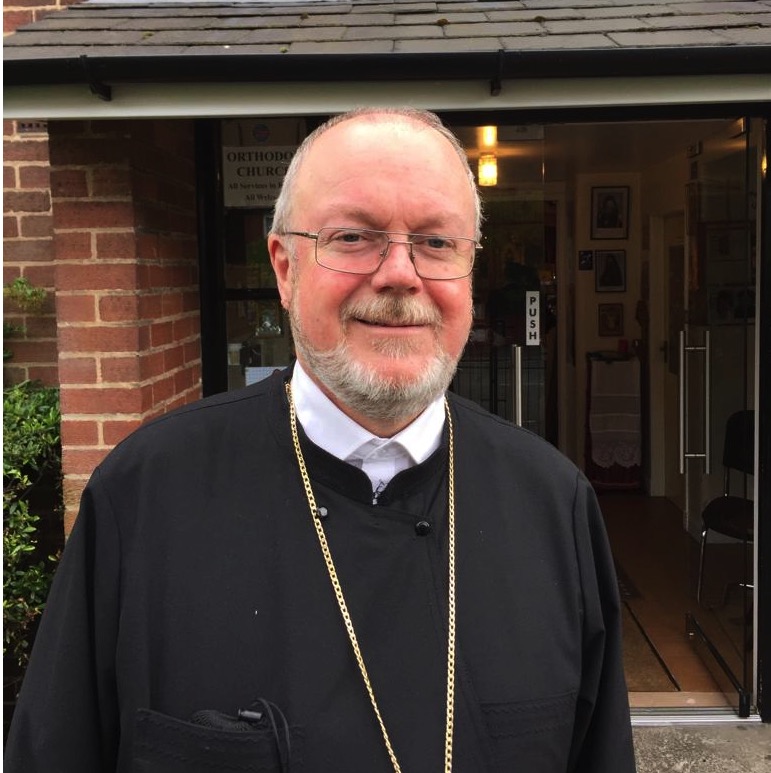Old and New Dispensations
In the name of the Father and of the Son and of the Holy Spirit. God is one. Amen.
In the epistle today from the third chapter of Paul’s Second Letter to Timothy, St Paul reminds St Timothy, and I quote: “Now you have observed my teaching, my conduct, my aim in life, my faith, my patience, my love, my steadfastness, my persecutions, my sufferings,” wrote St Paul. It was St Paul who had come to Lystra many years earlier, because St Timothy was “well spoken of by the brethren in Lystra; … and Paul wanted this man to journey forth with him,” as set out in the Acts of the Apostles, in the opening verses of chapter 16.
The reason why St Paul sought out St Timothy was because he was a strong member of the Christian congregation in Lystra, as were his mother and grandmother. As explained in Second Timothy, chapter 1, St Paul wrote, and I quote: “I am reminded of your sincere faith, a faith that dwelt first in your grandmother Lois and your mother Eunice and now, I am sure, dwells in you. Hence, I remind you to rekindle the gift of God that is within you through the laying on of my hands; for God did not give us a spirit of timidity but a spirit of power and love and self-control,” concluded St Paul.
However, there was a problem, St Timothy’s father was a well-known Greek Gentile—definitely not a Jew, So, the Jews that St Paul planned to visit and evangelise would be quite suspicious of this son of a Gentile. Therefore, as set out in the Books of Acts, chapter 16 St Paul “immediately circumcised him because of the Jews that were in those places.” This was especially important because what St Paul wanted to communicate was “the decisions which had been reached by the apostles and elders who were in Jerusalem.” Those decisions were about how Gentiles should behave when they wished to become Christians.
St Paul and St Barnabas had convinced St James and the elders that when Gentiles wished to become Christians they were not required to be circumcised. However, as set out in the Acts of the Apostles, chapter 15, verses 19 to 21, they would be required to stop all worship of idols, any sexual immorality and the eating of certain animals that were forbidden to Jews, because of how the animals had been killed. As St James said, and I quote: “My judgment is that we should not trouble those of the Gentiles who turn to God.” In other words, circumcision and strict observance of all the laws of Judaism were not required, but one must worship only the one true God and live a moral life.
You will perhaps be puzzled as I was: Why would St Paul immediately circumcise a man when the young Christian Church had just stated that this was not necessary? I think St Paul wanted to make sure that both the Jews and the Gentiles looked upon St Timothy as a person who was deeply committed to the Christian faith, just as were his Jewish mother and grandmother. Certainly that is the message that St Paul communicates in the remainder of today’s epistle from Second Timothy, chapter 3, verses 14 and 15. St Paul wrote to St Timothy; and I quote: “As for you, continue in what you have learned and have firmly believed, knowing from whom you have learned it and how from childhood you have been acquainted with the sacred writings which are able to instruct you for salvation though faith in Christ Jesus,” wrote St Paul.
St Paul’s message to St Timothy continues in the next line after today’s epistle; and I quote: “All scripture is inspired by God and profitable for teaching, for [censure], for correction, and for training for righteousness,” wrote St Paul. The reason for this emphasis upon scripture, as set out in verse 16, is so that every person who believes in God “may be completed, equipped for every good work.” In essence, St Paul has chosen St Timothy because he is a model for how to learn and communicate Christ to everyone, whatever their previous beliefs.
Remember that St Paul’s reference to “all scripture is inspired by God” refers here solely to the Jewish Bible—what we Christians know as the Old Testament—which was the only Bible known to the early Christians. You might ask: How can the Old Testament communicate Christ to us today? The more closely we read the Old Testament, the more deeply we understand that it prepares the way for the coming of Christ. In Scripture in Tradition: The Bible and Its Interpretation in the Orthodox Church, Father John Breck writes; and I quote: “The Old Testament and the New Testament bear mutual witness to each other, and therefore they can only be interpreted reciprocally [that is, with both Testaments giving and receiving from each other]. Although the Old Testament still constitutes ‘the Hebrew Scriptures,’ it is in reality the first panel of a diptych [that is, a pair of pictures or icons painted on a hinged wooden panel], the whole of which reveals God’s creative and redemptive activity in the person of Jesus Christ. The exegetical method developed by the Church Fathers to accomplish this interpretative task … sees the Old Testament as a prefiguration or prophetic image of the New Testament,” wrote Father John [p. 22].
This interpretative approach of which Father John writes is known as “typology.” He explains; and I quote: “Within the framework of salvation-history, [certain] events that occur in the experience of a people, particularly the Hebrew people, constitute ‘types’ (typoi) or prophetic figures of persons, events and institutions to come, that will be fulfilled in the messianic age. The relation between the two Testaments is a ‘typological’ relationship, in which God’s promises of salvation, expressed in Israel’s history as well as by the oracles of the prophets, will be fulfilled in the person of Jesus Christ and in the life of the Church,” wrote Father John [p. 22].
Father John then asks: “How, from an Orthodox perspective, does one read the Bible appropriately” He gives three clear and profound principles; and I quote again: “First, that God is absolutely sovereign over the entire cosmos, as its creator and sustainer as well as its redeemer; second, that God governs all events in the course of human history, either by his ‘permissive will’ that allows tragedy and destruction in a fallen world, or by his ‘intentional will’ that initiates events which lead the world toward salvation and the faithful toward eternal life; and third that God has ordered ‘salvation-history’ in terms of ‘promise’ and ‘fulfilment’: that is, he has revealed his saving will—the divine economy—by means of the former Covenant established with Israel, and he works out that economy through the age of the Church,” concluded Father John [pp. 21-22].
For St Paul, becoming Christian and helping to build the Church was a completion of his earlier Judaism through turning to Christ and His Church. Let us continue to grow as Orthodox Christians as we read and pray with both the Old Testament and the New Testament.
And so, we ascribe as is justly due all might, majesty, dominion, power and praise to God, Father, Son and Holy Spirit, always now and ever and unto the ages of ages. Father Emmanuel Kahn

 Archpriest Gregory Hallam
Archpriest Gregory Hallam
 Fr. Emmanuel Kahn
Fr. Emmanuel Kahn